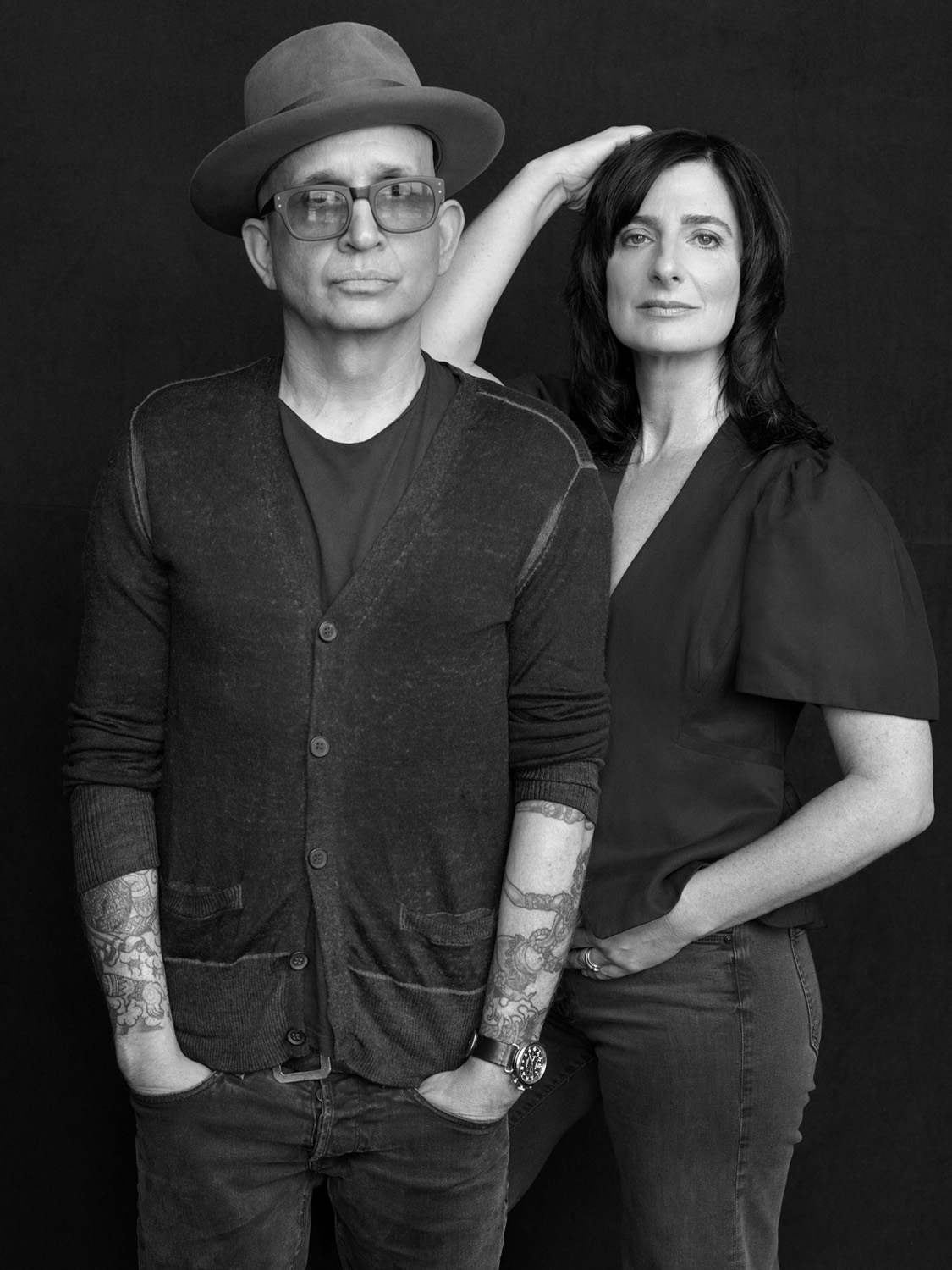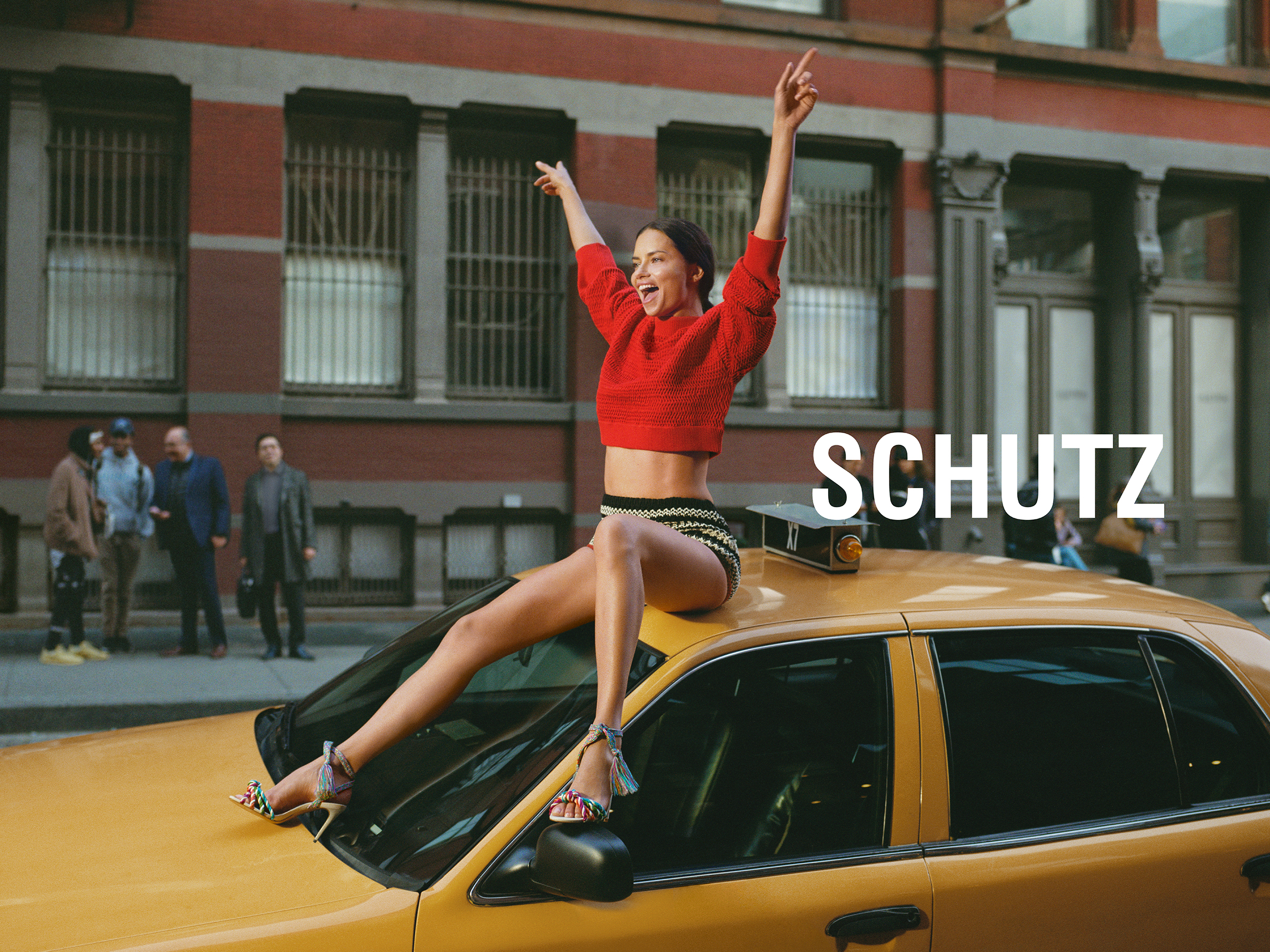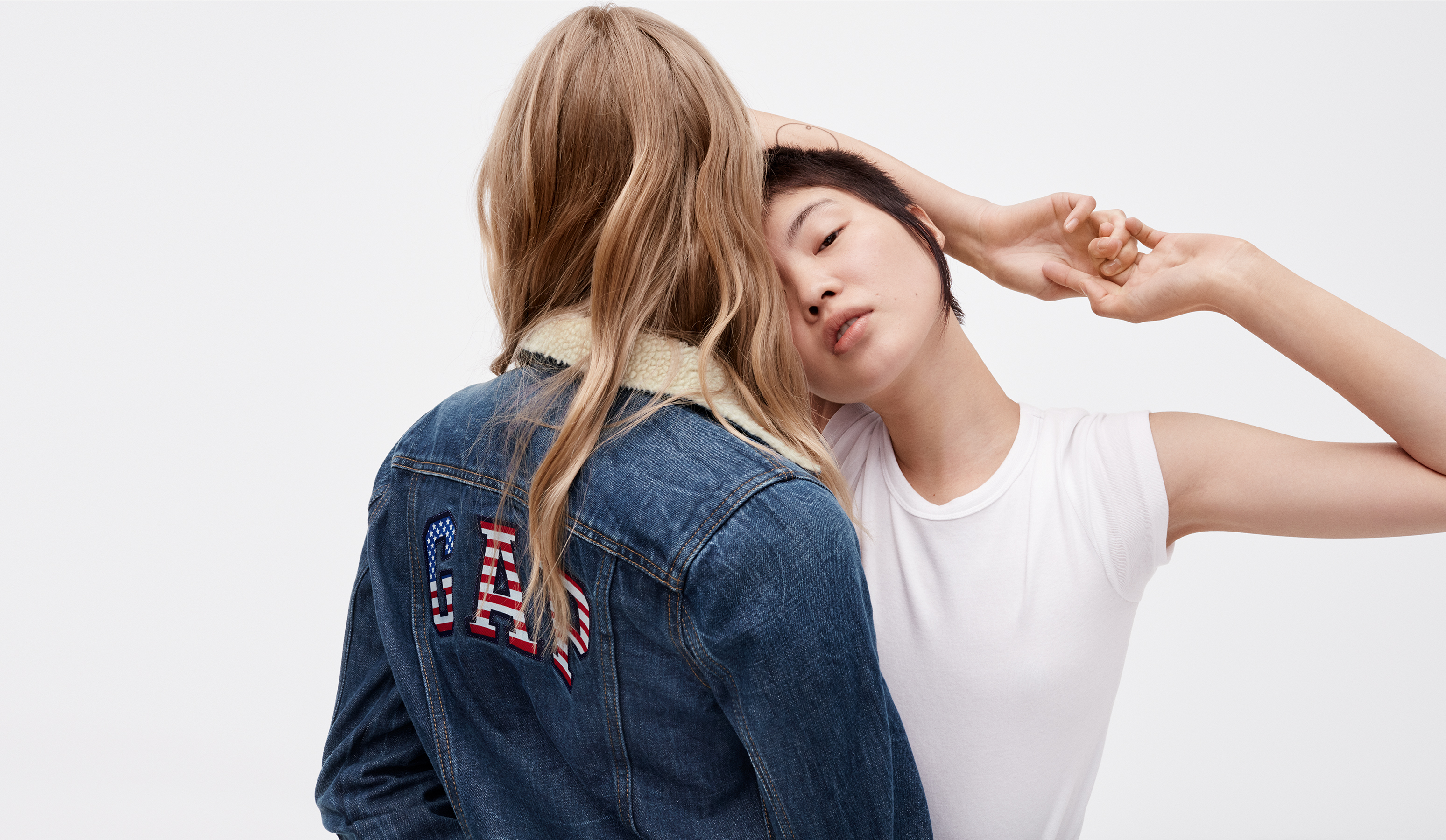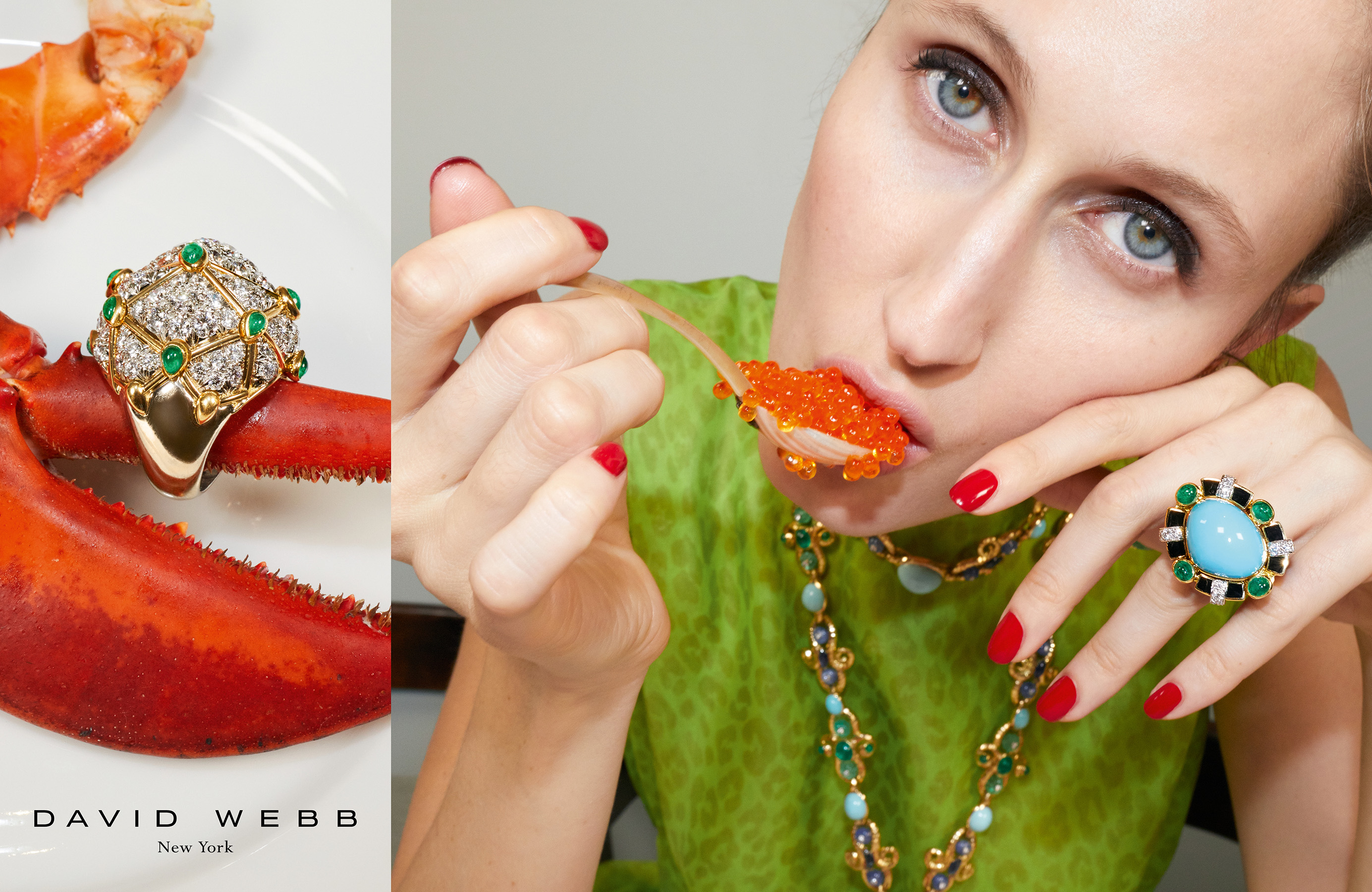Interview By Obi Anyanwu
Ruth Bernstein and Stephen Niedzwiecki founded creative company Yard NYC to help turn brands into cultural beacons. The award-winning creative agency specializes in brand, influencer, and content strategy, integrated campaigns and communications planning among other services, for global fashion, beauty and lifestyle companies like John Varvatos, David Webb, Schutz and Gap. Obi Anyanwu of The Impression sat with Ruth and Stephen to discuss their careers and explore the creative strategies of the past and present.

Obi Anyanwu: Thank you for taking the time out to speak with us. How did you get started in the creative arts?
Ruth Bernstein: I started my career in London. I went to Goldsmith’s College around the same time as Damian Hurst — it was a great time to be there. It was the epicenter of the merging of design, media, and anthropology. I was so fascinated with people, what drove their desires, and how cultural movements were made. It was just a natural progression to apply this to my love of fashion and beauty.
Stephen Niedzwiecki: I thought I wanted to be a painter, but as time went on, I was looking for ways to turn my obsession of making art, buying music, and going to shows into something that could really pay the rent. My love for painting transitioned to my love for design and photography. Living in New York City and getting deeper in the club scene, there was a creative energy for turning everything inside out that I found really exciting. I wanted to find ways of applying that to my work. Being on the team that created Origins was a good example of that — at the time, it was a complete reinvention of a beauty brand.
Ruth Bernstein: When I moved to New York, I met Stephen, who was a creative director, and we essentially put strategy and creative together in an industry that, at the time, wasn’t thinking strategically.
Stephen Niedzwiecki: That’s how Yard NYC was born.

Obi Anyanwu: How do you look at creating today compared to when you started Yard NYC?
Stephen Niedzwiecki: Well, the good news is now everyone really understands the value of strategy in helping to land on and maximize a really big idea. When we first started, that wasn’t the case. And of course, now it’s digital and that makes it a lot more exciting. The media buys when I first started were predominantly print, broadcast and outdoor. Now there are more ways we can play, and there is much more to learn. Technology makes things super fun and interesting especially for someone who’s been doing this for 20 years.
Ruth Bernstein: What worked yesterday might not work tomorrow so it’s wide-open, keeping everyone dancing.
Stephen Niedzwiecki: You’re learning more things every day and forming partnerships with geniuses.
Obi Anyanwu: What do the geniuses know that we could all learn from?
Ruth Bernstein:
I am continually blown away by what we can learn by getting under the hood of the social media platforms to learn about real consumer behavior. The real stuff. Not what they say but what they really do. It often shatters our assumptions about people and brands.
Ruth Bernstein
Stephen Niedzwiecki: The Holy Grail is finding that perfect place where art and science meet to create something you could never do before. Technology without an amazing story to tell is just that. A data point can only make its point. But when you add creativity, humanity and beauty, that’s when magic really happens.
Obi Anyanwu: Let’s talk partnerships. What do you look for in collaborators, or even clients?
Stephen Niedzwiecki: For creative collaborators, we look for people who are truly that, collaborators. You can always have an idea, but you partner with people who are better than you because you want that idea to flourish. The decisions you make between who’s shooting the concept, who’s directing it, and who’s creating it with you are just as important as the idea itself. I’m always looking for good people who truly understand the meaning of collaboration and want to have a good time making it. There’s enough darkness in the world right now. I look for collaborators who want to bring the light. In terms of clients, we look for the same good vibes and the bravery to make stuff happen.
Obi Anyanwu: You had mentioned earlier that you moved to San Francisco to work for Gap, and now the company is one of Yard NYC’s clients. How was your experience signing the company as a client?
Stephen Niedzwiecki: It’s been an amazing experience for it to come full circle. I have a lot of heart for the brand, and I’ve watched it over the years. When I was in-house in the late 90s, it was probably the best time for the brand on a lot of levels.
For us, this has been an opportunity to bring it back. We’ve been working with a great team there. You have to have a sense of bravery to be able to do great work in general, and if you have a client who’s got that sense of bravery and ambition, it goes a really long way.
Ruth Bernstein: Craig Brommers, Gap’s Chief Marketing Officer, said that “great brands run towards themselves.” And that’s exactly what we all did.

Obi Anyanwu: Have the conversations changed from when you were in-house to now?
Stephen Niedzwiecki: Yes and no. It goes back to the playing field. On the one hand, the realities of a retail business are the same and all of the needs of the retailer have to be met. On the other hand, digital has changed everything from communication to distribution, and the competitive landscape has fragmented in a million different ways. It means that having something to say and stand for is absolutely essential.
Obi Anyanwu: How do you make a giant like the Gap feel fresh and new?
Ruth Bernstein: The first thing we did was go back to what made Gap amazing.
Stephen Niedzwiecki: We brought back many of the core ingredients that people remembered of Gap. We wanted to bring back the joy and entertainment that the brand used to deliver, and that brought people together.
For us, it’s about going back to the DNA of Gap brand, reinventing it and taking ownership of the white space again. But how do you keep it fresh and keep reinventing it? How do you bring different talents together? How do you surprise people with your music choices? It’s the same ingredients from the past but it’s a new version of it.
Ruth Bernstein: There’s a place for an optimistic, positive brand like Gap. We want to show people that even in a divided world, there’s good in the gaps, and that is how the, “Meet Me in the Gap,” campaign was born. It’s really about bringing the best creators together and creating alchemy in the blank canvas of the white space. Every piece of content is created for a purpose.

Obi Anyanwu: What continues to excite you about creative direction?
Stephen Niedzwiecki: A lot of it has to do with how storytelling is being transformed by technology. I love how nonlinear and situational a story can be. All the platforms we rely on come at us at all different times and angle. Everything is fragmented, three screens are open at any given time, people have 1-2 seconds of attention span, and even that is decreasing. You can’t fight these realities, and it’s best to embrace this beautiful chaos. There’s a real opportunity to surround people with many disparate parts of a campaign narrative, so they can piece it together in their own way.
What’s exciting to me is finding ways to grab people’s attention in an ADD world.
Ruth Bernstein: Our greatest value and love is helping brands who have been caught flat-footed by technological disruption, discover who they are, and help them talk in a radically different world to a radically different generation.
Stephen Niedzwiecki: The people, too. Collaborating with people I haven’t collaborated with in the past, working on different mediums that I haven’t worked on in the past, and believing that we can continue to create great work for brands. Another thing that continues to excite us is working with brands in different industries outside of fashion and beauty. Brands that are brave and appreciate the work we do, allowing us to bring it into their worlds.
Ruth Bernstein: I think that the fashion industry used to be quite restricted. It felt like a bit of a closed door, but technology is opening that up now. Look at what’s happening at all the big fashion houses. New people and new ideas are reinventing decades of heritage and are using digital to scale that disruption. We’re excited to work with more and more brands who want a partner to help them find their way in this new world.
Stephen Niedzwiecki: Take a brand like David Webb, who we’ve been working with this year. They are one of the most iconic brands in the fine jewelry category. There is simply no one like them out there. It’s been incredibly exciting to create a story that positions them for the younger generation, and to give them a creative platform that touches everything they do…not just the image. The idea at the heart of the brand meant we could be bolder and break some of the category rules. Working with Jurgen Teller was just the first step in that approach; with digital helping scale the brand.
We’ve also been working with Schutz in Brazil to do the same thing. We’re helping to define their position and create an amazing platform for them, and are letting the digital landscape shape and find our tribe. We have some amazing ideas in the pipeline that blend fashion, technology, and social coming up, and we have a partner in Alexandre Birman that is always asking us to push them further and further digitally.
It’s not just in fashion and luxury, but younger digital-centric brands are also asking after us. Working disruptors like Leesa Sleep, who are taking on this always-on world, and Olly, who are reinventing nutrition is really exciting as well. All of these companies are doing really cool stuff in their area. I’ll always love fashion and beauty and that will always be my core, but I do love branching out.
Ruth Bernstein: Gen Z. I believe that generation will change the world. Just look what they’ve already taken on like gun control. It keeps me coming back for more.
Portrait Photo | Mark Seliger for The Impression 250
